News & Events
Newsletter #2
28 June 2022
Welcome To Our Newsletter #2
Welcome to the June 2022 newsletter of the Playing with Protons Goes Digital project! As you may recall, exactly one year ago we started our effort to help adapt science teaching and learning to the post-COVID19 era. Our approach to achieve this aim by fostering the digital readiness of science classrooms across Europe through the combination of exciting digital technologies with creative hands-on and minds-on activities. As we have been progressing with the project, we are enthusiastic about the appreciation and the results obtained so far. Many teachers participate in our training activities, showing a growing interest and willingness to try out our approach and methodology with their students.
In this issue:
- Find out about our first face-to-face project meeting in Bilbao, Spain
- Meet Jorge R. López Benito (CreativiTIC) in his interview to Natascia Conforti
- Learn about our teacher training activities in Greece, Italy, and Spain
- Art & Science across Italy: A grande finale to a top STEAM project
We hope you enjoy reading our newsletter and invite you to check our website regularly, follow us on social media. And please feel free to get in touch with out national contacts in Greece, Italy, Spain, and the UK for bringing Playing with Protons Goes Digital to your school classroom.
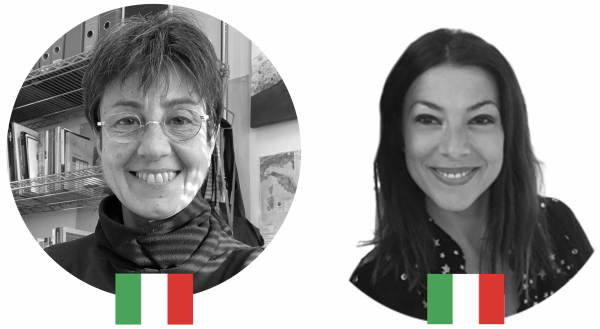
Flora di Martino & Natascia Conforti
Newsletter Co-editors
Table of contents
Bilbao here we are!
Two intense days of in-person ideas sharing, input gathering, and AR workshops marked the 2nd Transnational Project Meeting held in Bilbao from 12 to 13 April 2022.
Hosted by our Spanish partner CreativiTIC, the 2nd Transnational Project Meeting of Playing with Protons Goes Digital took place from 12 to 13 April 2022 in the creative spaces of Bilbao Berrikuntza Faktoria – Mondragon University in Bilbao, Spain.
The meeting started with a warm welcome by the project coordinator Dr. Pierluigi Paolucci (INFN) and was followed by an update of the project’s status by Dr. Angelos Alexopoulos (Ellinogermaniki Agogi). The partners were then presented with the results of the Needs Analysis Survey that was completed in winter 2021-22 based on a sample of 138 primary and secondary school teachers from Greece, Italy, Spain, and the UK.
Amongst its results, the Needs Analysis Survey showed that while 7 out of 10 teachers have heard of Augmented Reality (AR), only 17.5% of them have used it in the classroom.
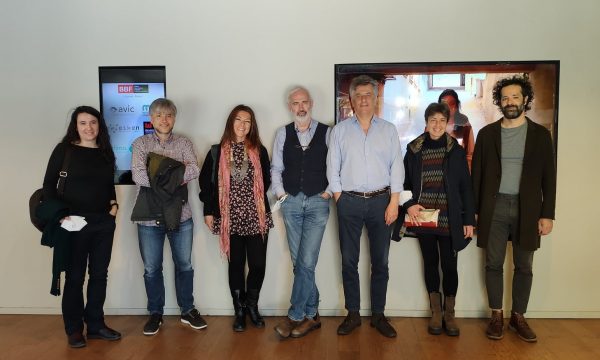
Of special value to the project was the finding that almost 8 out 10 teachers expressed their interest to be trained on how to use AR technologies in their teaching. The partners stressed the importance of this finding that confirms the strong potential that AR applications – and specifically the Playing with Protons Goes Digital platform – can offer for enhancing STE(A)M teaching and learning in the post-Covid era. The meeting continued with a status update on the project’s Intellectual Outputs, giving more emphasis on the “Conceptual and Methodological Framework” which is due to the end of May 2022. Several activities with teachers in the context of Multiplier Events (MEs) were also presented. INFN’s feedback on a remote ME was very positive, with participant teachers expressing their strong interest to be part of the project’s community. More MEs are scheduled to take place in Greece, Italy, Spain, and the UK during springtime.
The second half of the day was devoted to the much-anticipated AR workshop curated by the CreativiTIC team. The workshop included a presentation of the beta version of the project digital platform that builds on Augmented Class, CreativiTIC’s flagship AR platform for education. Augmented Class enables teachers to transform their science lessons into immersive AR-supported learning experiences for students. The partners also tried out VR glasses provided by the The CreativiTIC team!
On the second day of the meeting, the communication and dissemination activities were discussed amongst the partners. Natascia Conforti (Città della Scienza) also presented the social media strategy of the project and provided feedback and advice on reaching and engaging further our target audiences to increase the visibility of the project. The partners then discussed how to incorporate social media and email campaigns into the overall communication and dissemination effort of Playing with Protons Goes Digital.
The meeting was concluded with short reflections on the contributions of each partner and a summary of key action points to facilitate the further development of the project.
The consortium decided that the 3rd Transnational Project Meeting will take place next autumn in Athens. Greece.
Meet jorge R. lopez benito
Our newsletter co-editor Natascia Conforti interviews CreativiTIC CEO, lecturer, strategic advisor, investor, and techpreneur Jorge. R. López Benito.

Natascia Conforti (NC): CreativiTIC started in 2011 in Spain with the vision to empower the human experience through digital enablement. The company seeks to offer innovative solutions for the Education, eHealth, and Industry 4.0 sectors. How did it go? Was it simple or did they take you as visionaries?
Jorge R. López Benito (JLB): We were pioneers. In 2011, the Google Glass augmented reality glasses had not yet been released, nor the Oculus virtual reality glasses, nor Pokémon GO, nor most of the comforts that we have today available with immersive technologies. It was not easy to reach people with the improvements that this technology was going to bring us, but time has proved us right and today they are a reality.
NC: Can you explain to us the difference between AR and VR?
JLB: The differences between VR and AR come down to the devices they require and the experience itself: VR is a technology that creates a virtual environment. People interact in these environments using, for example, virtual reality glasses or other mobile devices. AR is the real-time use of information in the form of text, graphics, audio, and other virtual enhancements integrated with real-world objects. It is this “real world” element that sets AR apart from virtual reality. AR integrates and adds value to the user’s interaction with the real world, versus a simulation.
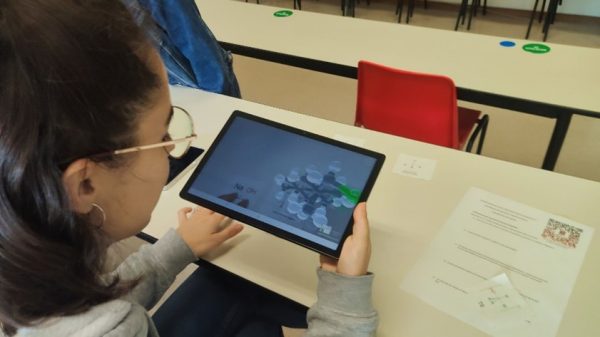
NC: Teaching with augmented reality represents one of the new frontiers of the new innovative teaching, can you provide us with some examples?
JLB: There are numerous examples today as they can be applied to almost all learning disciplines. This can range from its incorporation in the explanation of the chemical formulation to the improvement in the learning of a second language or a better explanation of the historical context and cultural heritage.
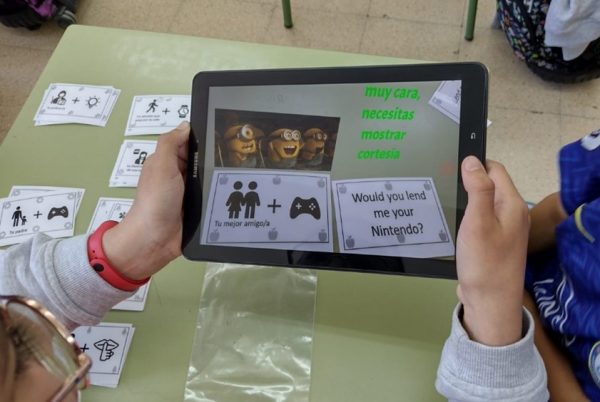
NC: What are the benefits of this methodology?
JLB: The benefits of including Augmented Reality are diverse and proven. Among them we can find that they help to: a greater understanding of the content, facilitate spatial learning, improve linguistic associations, help the long-term memory retention, improve teamwork performance, and increase the motivation of students and teachers.
NC: Although it sounds like the next big thing, Metaverse seems to many such a distant and abstract thing. Can you help us understand what Metaverse is and what impact can have on our lives?

JLB: The Metaverse is not as far away as we may think. We can already incorporate all the technologies that the metaverse will contain, what’s more, we are already incorporating them with the AR and VR experiences. The metaverse is a new paradigm that is positioning itself very quickly and in which a lot of money is being invested from both public and private institutions. This same month of June will be one of the main topics of debate at the Digital Assembly 2022 organized by the European Commission in Toulouse and where I will attend to prepare the strategy that Europe will have to shape the metaverse. The metaverse is the future of the internet, it is the new evolution towards a web3 and a 3D internet where the use of AR and VR technologies will be the path through which we will abandon our dependence on screens and technology tactile to be able to interact with all the information that surrounds us in a natural way. And of course, it will revolutionise the way we perceive and experience learning today.
NC: Thank you so much for talking to us about all these fascinating things!
JLB: Thank you for the invite. It’s been a pleasure talking to you!
Teacher training activities
May and June 2022 were marked by the first series of teacher training events in Greece, Italy and Spain. Read all about it below.
GREECE
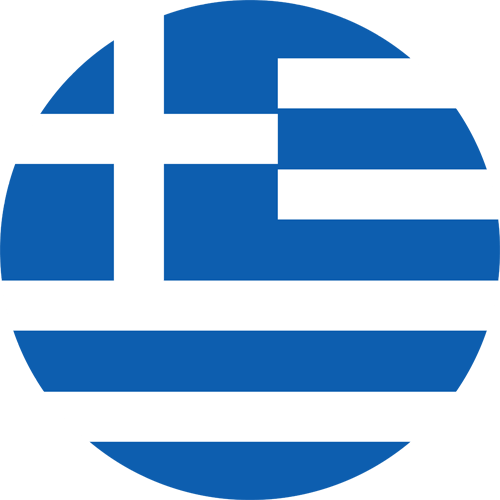
The first Multiplier Event in Greece took place on 20 May 2022 in Florina, a small and remote town in Northwest Greece. This teacher training activity was co-organised by the Western Macedonia Education Authority of Primary and Secondary Education, the Education Innovation Hub of the same region, the Florina ICT Teachers Association, in collaboration with Ellinogermaniki Agogi in the framework of the Playing with Protons Goes Digital and the Schools as Living Labs projects.
Considering the rapid educational changes caused by the COVID-19 pandemic, the aim of the training seminar was to familiarise primary and secondary teachers from remote school of the region with a new model of interaction between schools and informal learning organisations by integrating digital technologies into their everyday school activities.
The 29 participants thus had the opportunity to:
- Learn new ways of collaboration between schools and informal STEM organisations (e.g., research centres, science dissemination centres, etc.) that respond to students’ digital needs and interests;
- develop their digital competences and skills using new digital augmented reality technologies;
- enhance their face-to-face and distance learning through more interactive and personalised STEAM activities proposed by the Playing with Protons Goes Digital project;
- share their experiences and interact with communities of school Living Labs, in a European platform The Schools As Living Labs’ Community Platform, contributing to the design of hybrid STEAM environments that benefit not only from “smart technologies” but also from the added value of combining formal and informal learning.
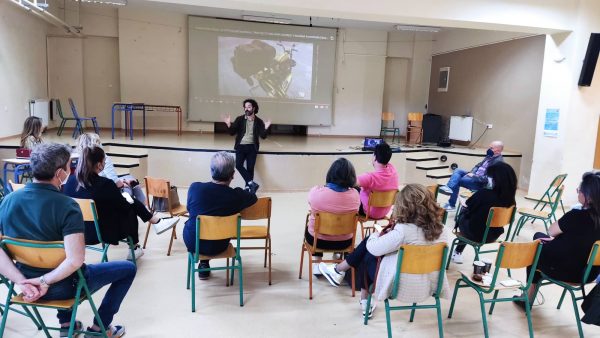
Of particular interest was the presentation by primary school ICT teacher Sotiris Georgiou, demonstrating his teams’ newly developed AR app that enhances Grade 4 history book with attractive audio-visual narratives, offering participants the opportunity to appreciate the pedagogical merits of AR technologies in STEAM teaching and learning.
Following pilot implementation in selected remote schools in Florina and the region, the organisers promised to repeat the training seminar in spring 2023.
ITALY
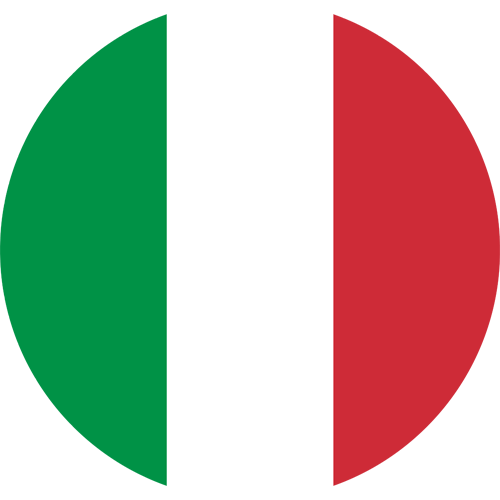
The first Multiplier Event in Italy took place on 10 June 2022. Organised by INTN, the event was hosted at the premises of Cittá della Scienza in Naples. The event brought together primary and secondary school teachers both physically and virtually from Naples, the islands of the Neapolitan Bay, and the rest of Italy. This full-day event focused on creative ways, such as storytelling, through which big ideas of science can be integrated in the development of engaging lesson plans and hands-on activities for students.
The event started with presentations by INFN staff during which the participants learnt how to create science storytelling. Of particular interest were examples given by the INFN Communication Office, including the Physics in the waves: what stops cosmic rays? [video]. In the afternoon workshop, the participants were split into groups of primary and secondary teachers and shared their ideas on lesson plans inspired by the morning session. The event was very well received with positive feedback on the engaging presentations along with the hands-on workshop. The organisers suggested a future version of the event in spring 2023.
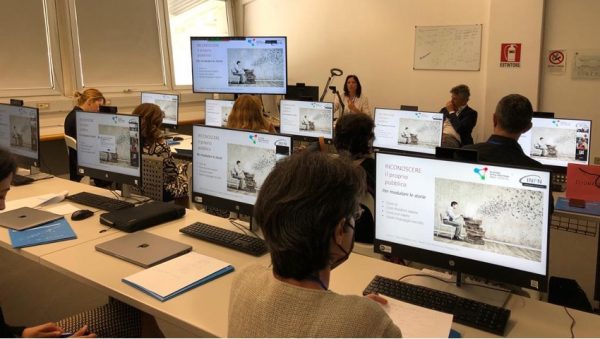
SPAIN
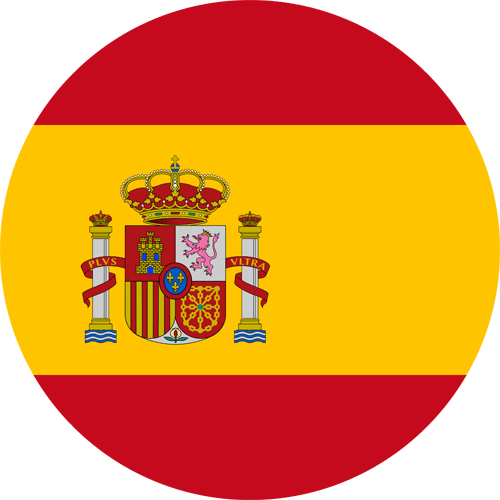
The spanish wing of our series of Multiplier Events took place on 26 May 2022 at the Colegio Alazne IKastetxea in Bilbao, Spain. The CreativiTIC team provided teachers the opportunity to understand “Why Playing with Protons Goes Digital?” and also the added value of Augmented Class for offering GenZ students immersive and creative STEAM learning experiences inspired by big ideas in science. The CreativiTIC team promised participants to meet again in spring 2023 to reflect on the application of the Playing with Protons Goes Digital approach and methodology. And do not forget, If you are a science teacher working in Spain and see interest in our project, feel free to contact Jorge R. López Benito, our national contact in Spain, who together with his team can help you implement inspiring science activities in your classroom.
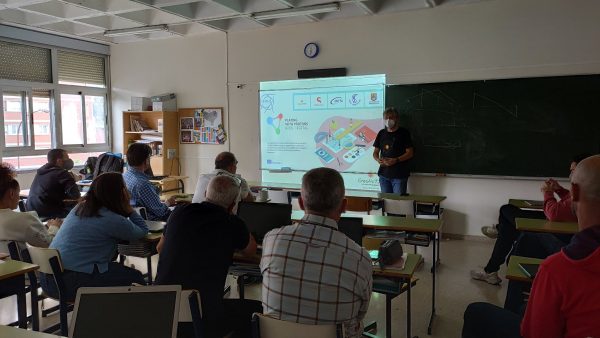
Art & science across italy
May 2022 marked the grand finale of the 3rd edition of what has proved to be a hugely successful school STEAM initiative in Italy.
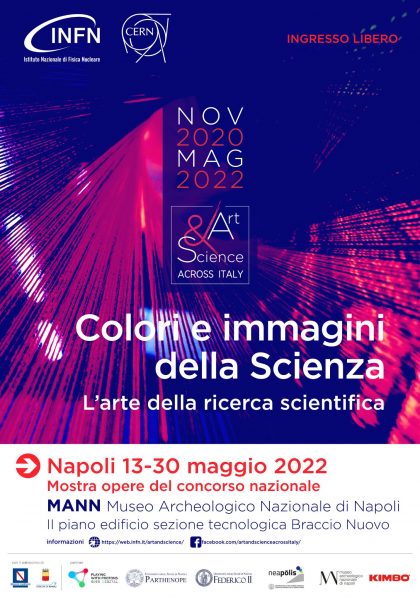
The third edition of the Art&Science Across Italy STEAM project concluded with the exhibition “Colours and Images of Science” that was inaugurated on Friday 13 May 2022 at the National Archaeological Museum of Naples (MANN), and on the following day with the conference show “With Art and with Science: Time is Told” that took place in the Acacia theatre in Naples.
Colours and Images of Science
The “Colours and Images of Science” exhibition was realised by INFN in collaboration with the University of Naples Federico II and the University of Naples Parthenope, along with the patronage of the Campania Region and the City of Naples, and the financial support of Kimbo Caffè. It presented 70 student artworks that were previously awarded in local exhibitions hosted earlier this year in 12 Italian cities, setting a record of participation for the 3rd edition of the project. Let the numbers speak for themselves: more than 6,000 students, 1,200 artworks, 140 high-schools, 13 exhibitions, 12 cities, 1,5 years of scientific inspiration, imagination and creative thinking.
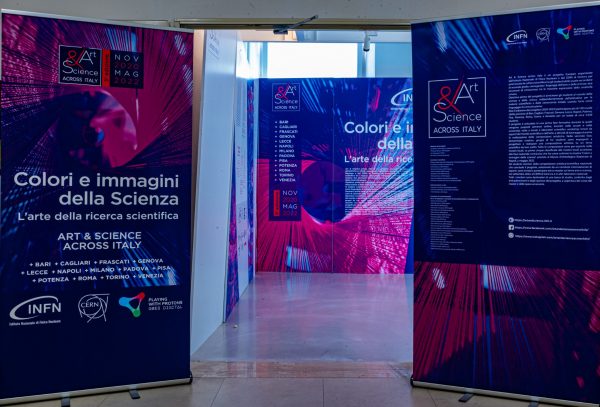
Designed by architect Maurizio di Palo, the final exhibition at MANN also brought together artworks by professional artists and INFN scientists that expressed in various mediums such as paintings, sculptures, collages, and installations the interconnections between science and the arts.
“There are many scientific topics recounted and in many of the artworks we saw the type of creativity we have been aiming at since day one back in 2015. The experience gained by 110 researchers in recounting science and by around 350 teachers in coordinating the work of students has clearly shown its fruits in terms of both the quality of the actual artworks and the engagement and enthusiasm of the students,” said Dr. Pierluigi Paolucci, national coordinator of the project and senior physicist at INFN and CERN.
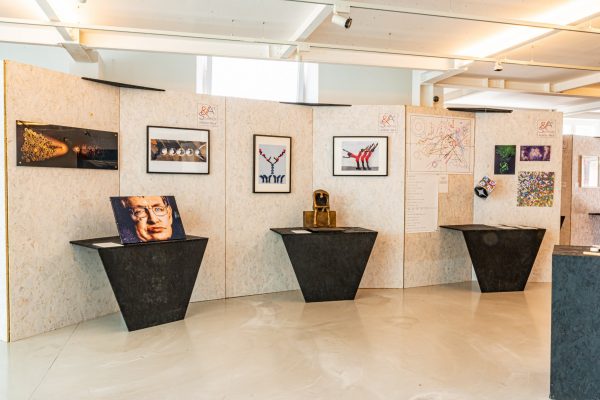
The 70 artworks that were created by over 200 students and which were selected by the Art & Science across Italy local juries, reflect in the best possible way the aims of the project, which was met by great enthusiasm and participation by all students who were involved over the past two years.
On display, however, were not only the artworks of the Italian students but also the five-winning artworks of Art & Science Across Greece, the younger sibling project led by Ellinogermaniki Agogi. It also included artworks created by INFN employees that were selected by a jury of students participating in Art & Science across Italy and science enthusiasts and fans of the physics communication and education website ScienzaPerTutti.infn.it. The exhibition was also enriched by the presence of an interactive multimedia installation by INFN on the expansion of the Universe and 30 artworks by international professional artists who participated in the Art@CMS project at CERN. Lastly, eight works from the GenomicArt project, realised by the Genomics and Art Therapy Laboratories of the Evo and Elvo Tempia Foundation of Biella, accompanied the public on a path of encounter and rediscovery of cells through art and colours, while a new work by visual artist Silvio Giordano, realised as part of the ‘Enter the Dragon’ art project, proposed a floral transformation of the virus, a metaphor for the hope that human beings have in the flowering of civilisation through scientific progress.
With art and science, time is told
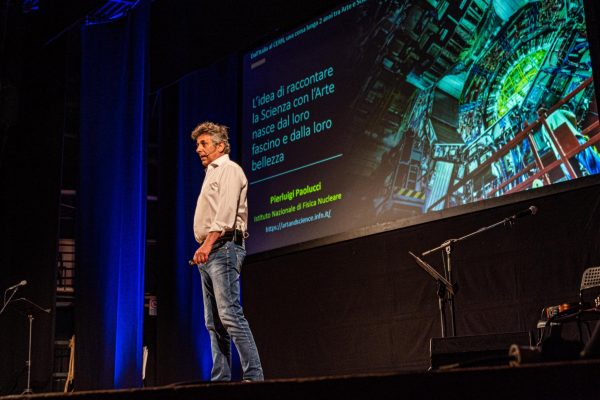
The 70 student artworks that were exhibited in the national exhibition were assessed by a jury composed of experts in art, science, and science communication. The award ceremony took place on 14 May 2022 in the packed Acacia Theatre in Naples. Shortly after Dr. Pierluigi’s delightfully unique and highly entertaining keynote, the top eight teams, each one composed of three students, received a unique award: a SciArt Masterclass at
Following the award ceremony, the audience was taken on a journey through the history of the Universe under the narration of Dr. Paolucci and the illustrations of Luca Ralli. Dino Buzzati’s and Bill Bryson’s stories read by actress Maria Giulia Scarcella then set the scene for a lively panel in which former INFN President Fernando Ferroni and artist Alice Visentin were asked to reflect on the very essence of creativity in a scientist’s and an artist’s work respectively.
More information on Art & Science across Italy is available here.
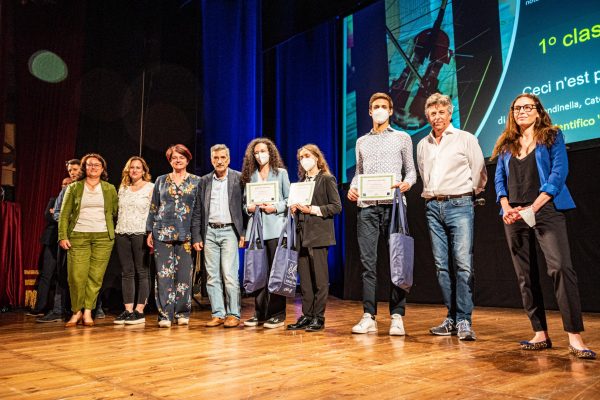
Events Calendar
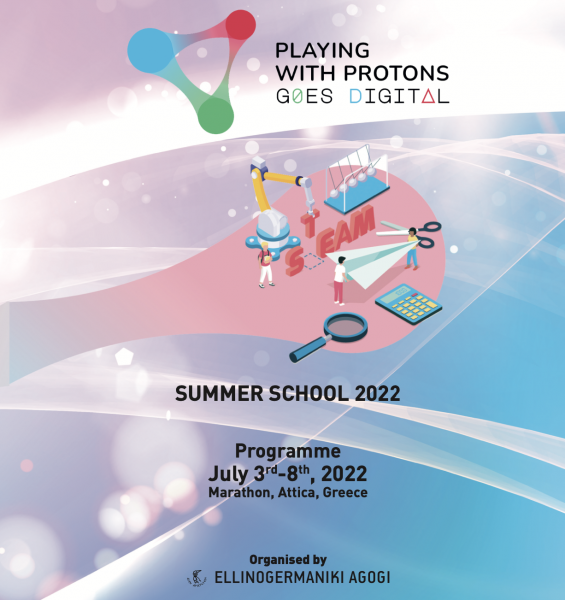 Playing with Protons Goes Digital 2022 Summer School
Playing with Protons Goes Digital 2022 Summer School
03-08 July 2022
Organised by Ellinogermaniki Agogi in the framework of the European Science Innovation Academy, the summer school will take place in Marathon, Greece, from 03 to 08 July 2022. Participants from Italy, Spain and Spain will be introduced to the project’s approach and methodology, and will then jointly design activities that build on the Open Schooling concept and employ the use of augmented reality (AR), appropriately framed and scaffolded, to foster creativity-enhanced inquiry-based science teaching and learning. More information on the summer school is available here.
